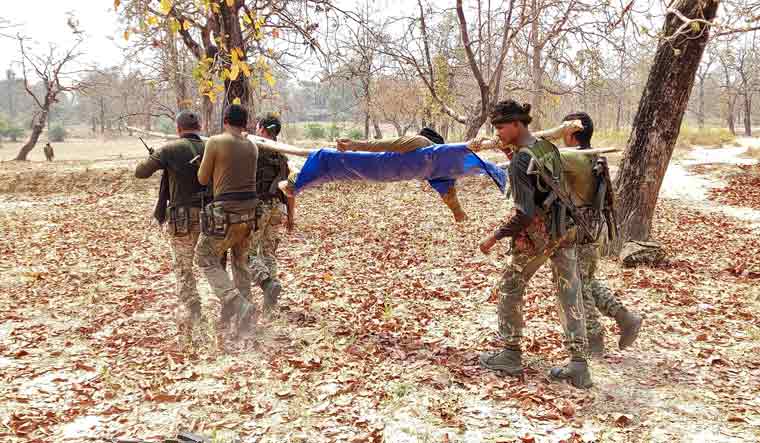From Dantewada in 2010 to Sukma in 2021, the timing, place and “terror mastermind” of the deadly Maoist attacks are no surprise either to the central or state police forces, raising a big question mark on the efficacy of the anti-Naxal policy for Left-wing extremism (LWE)-affected states.
The latest attack by the banned CPI(Maoist), killing at least 22 security personnel in Bijapur, Chhattisgarh, has exposed the chinks in the anti-Naxal grid and proved to the Narendra Modi government that the Maoist terror was nowhere close to elimination.
The strike is expected to prompt the Left-wing extremism division of the Union home ministry to revisit its anti-Naxal doctrine and its implementation by states.
The government had re-calibrated its anti-Naxal strategy after a gruesome attack in Sukma which killed 25 CRPF personnel in 2017.
Under the supervision of NSA Ajit Doval, the strategy was reworked to focus on 35 worst-affected districts, including Sukma and Bijapur.
The aim was to carry out fast-paced developmental works, improve road connectivity and simultaneously carry out anti-Naxal operations to improve access to their den.
“It was through area domination by security forces coupled with developmental activities that the government aimed to reduce the Naxal threat. But it is clear that even after so many years, the Maoists continue to have an edge in the same areas which have traditionally witnessed casualties of security forces this time of the year,” said a government official.
The Centre has also been providing monetary assistance to the LWE-affected states under the Security Related Expenditure (SRE) scheme to carry out developmental activities.
also read
- Chhattisgarh: 7 Naxalites killed in encounter with security personnel
- Naxalite killed in encounter with security personnel in Chhattisgarh's Sukma
- Mahadev betting app case: Mumbai SIT detains actor Sahil Khan from Chhattisgarh
- ‘Operation Prahar' explained: 5 things to know about the anti-Naxal op in Bastar
- Chhattisgarh earthquake: What we know so far as tremors felt in Jagdalpur
Prakash Singh, senior IPS officer and former DG BSF, said the SRE funds must be utilised adequately for developmental works in Naxal areas.
The Congress government in Chhattisgarh is answerable whether it has been giving utilisation certificates to the Union home ministry on SRE-related expenditure. “Usually there are delays by state governments,” said an MHA official.
While concerns around effective and timely utilisation of SRE funds can trigger a blame-game between the Centre and the state, at the moment, the focus of security forces is on combing operations that have begun in south Bastar forests.
While two dead bodies of security personnel were recovered on Saturday, 20 were retrieved on Sunday, while one is still missing. There is concern in the security forces camp about the Maoists taking possession, and efforts are on by senior officers on ground to trace it.
Security sources said Maoists have also suffered casualties but there is not enough evidence of the damages they suffered other than some technical intercepts so far.
“The casualty in the Maoists camp is in double digits but we have recovered only one body,” said an official, adding that other bodies were taken away in two tractors by the ultras.
Notably, this is the time of the year when the People’s Liberation Guerrilla Army (PLGA) is most active, and is planning strikes ahead of the monsoon season between April and June by carrying out the Tactical Counter Offensive Campaign (TCOC) - an annual exercise when they gather in large numbers to strike security forces in a big way.
The Centre, state government and security forces are well aware of the threat during this period, because TCOCs have largely been successful over the last several years.
There are enough intelligence inputs about Maoists trying to lay ambushes and carry out IED attacks, taking benefit of the conducive weather and knowledge of the terrain. During the monsoon, they again lie low as movement in the dense forests and uneasy terrains becomes difficult.
Elusive Maoist commander Hidma, who is leading the PLGA and is a member of the Maoists’ Dandakaranya Special Zonal Committee, is once again suspected to be behind the latest strike. He was suspected to have orchestrated the 2017 strikes as well as the 2013 Jheeram Ghati attack in Bastar district in which 31 people, including some senior state Congress leaders, were killed. Hidma was also behind the Chintalnar ambush in which 76 CRPF troopers were killed in 2010. A known military mind, he has been training 300-odd strong guerrilla army of Maoists, including women.





